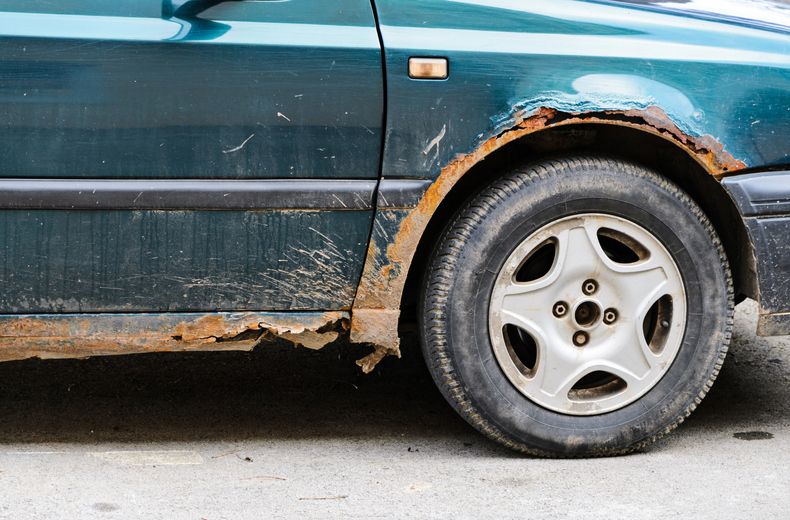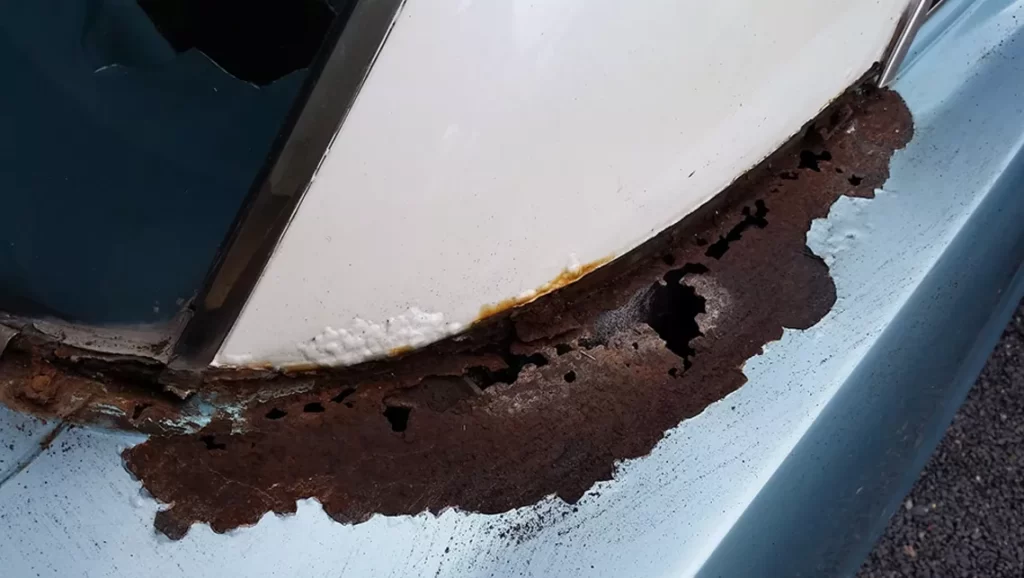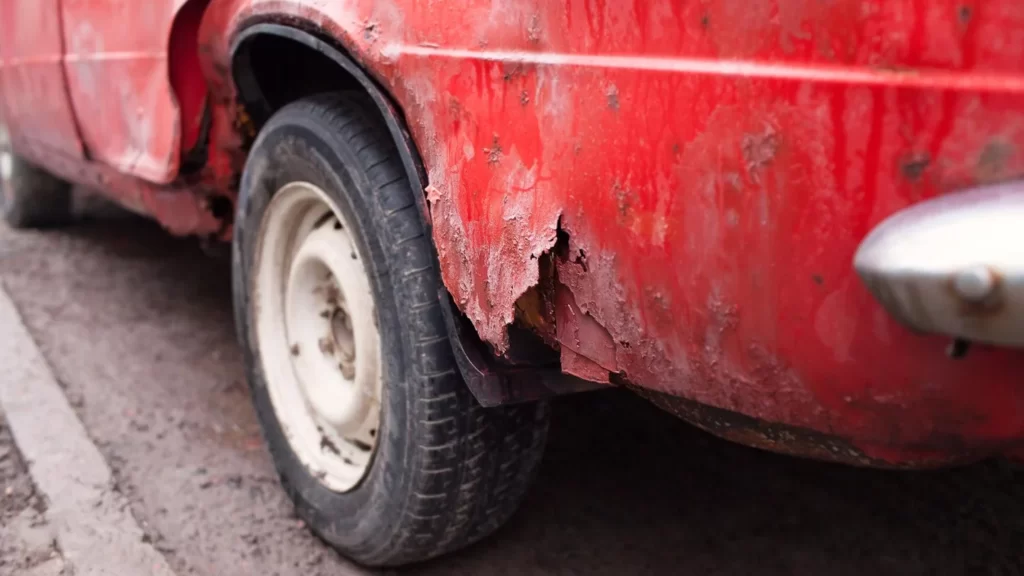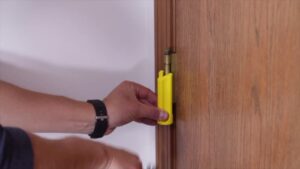
How to Prevent and Remove Rust on Your Car
Despite your best efforts, sometimes you may still notice that your car has rusted. Once rust has formed on the surface, it will not only spread but become more concentrated. If your car already has oxidation, it can quickly devalue the car when it comes to replacement. If you don’t deal with oxidation, it’s likely to make the car’s condition worse, affecting its operation. So, what can you do to prevent rust from getting worse?
Types of Rust
Generally speaking, there are three kinds of rust:
Surface Rust – Affects the top layer of a car and usually occurs in bumps and nicks in body panels. Dealing with damage at this stage will give you the best hope of avoiding spread.
Scale Rust – This is when the surface rusts long enough to eventually corrode the metal on the body panels. The salt found in road salt is notorious for accelerating the corrosion process and can affect the integrity of the metal itself.
Penetrating Rust – This is the most advanced and damaging rust on your car. If you rust the surface and scale, you may need to replace the entire part and body panels.
Why Are Cars Rusty?
Electrochemical decomposition of iron-based metals leads to rusting. Iron rusts when it reacts with oxygen and water. The oxide layer is reddish-brown and can lead to corrosion.
This damage usually occurs in cars due to a combination of factors:
Climate – Regular exposure to rain, sleet, and heavy snow increase the likelihood of moisture on your car being oxidized by metals. The salt used to spread sand on icy roads also accelerates the corrosion process, and the higher the temperature, the higher the corrosion rate.
Aging – Paint and protective coatings can wear off over time. If metal products are exposed to moisture, they will eventually rust and corrode.
Material – Older cars often don’t have a non-reactive coating and are therefore more prone to rusting. Newer cars also use arch liners to prevent damage to the wheel arches.
Driving style – If you tend to go off-road or go through puddles, you may increase your risk of corrosion.
At What Age Do Cars Start To Rust?
The age at which a car begins to rust is uncertain. Wear and tear can damage protective coatings over the years, exposing the metal to moisture.
While older models were built long before rust-resistant materials were often used in the manufacturing process, the most likely reason why your car turned into a barrel depends on other factors.
Common Car Rust Locations

Rust can develop anywhere in the body. In fact, surface rusting is often the tip of the iceberg, as it is common for oxidation to form inside a panel or part and spread outward.
The most important thing is to be aware of any exterior paint blistering. This is usually an early sign of rust.
In addition to looking at the bodywork, there are several aspects to pay special attention to. Check these parts from under the car:
- Frame Tracks – run under the sides of the car under the doors
- Wheel pits – the curves above the tires are prone to rust, especially in older cars that don’t usually have arch liners.
- Exhaust – Your exhaust pipe is exposed to moisture inside and outside the car that can be trapped by mud and grime.
- Suspension – Due to its proximity to the tires, it may scrape away dirt and other elements from the underside of the car, making it susceptible to moisture contact.
You should also check the following:
- Trunk floor – make sure to pull up the carpet to see if there are any signs of rust
- Windshield – the area around the glass is prone to leaks and is more susceptible to moisture.
- Doors – check inside and out.
How to Prevent and Remove Rust on Your Car

If you have some serious rust on your car, you’d better get a professional to deal with it, which can remove the oxide layer. This is especially true if you suspect that any part of the car may need to be replaced. If the damage isn’t that big, you can deal with it yourself so that no further damage spread occurs. Here are some of the different products and methods you might want to consider.
Regular Maintenance
Doing some routine maintenance on your car on a regular basis to prevent the spread of oxidation can be very helpful. Especially after your vehicle has been exposed to rain and snow, you should take some time to wash it and make sure to remove any dirt that may have accumulated under the car. You should also remove standing water from the bottom of the door and the sill plate drain holes, as these are the main areas of standing water.
Rust Removal
Scale rust is when the rust that forms after the initial oxidation becomes more severe and causes air bubbles that will eventually flake off, revealing more of the metal surface. Newly exposed surfaces can also rust, a process that will continue around your car if left unchecked. To stop this development, use a wire brush to remove it, then use a grinding wheel to sand rough surfaces and sandpaper to get a smooth surface. Then apply a primer and a matching coat of paint to the area to fully repair the spot.
If you’re not particularly good at sanding and wire brushing, you might just want to use a rust preventive product that can remove rust yourself. The formula has two main ingredients, one to neutralize the oxidation itself and the other to act as a primer for metal surfaces. After treating any affected surface, you can choose to repaint or leave it as-is, relatively safe from further oxidation and corrosion.
Rinse and Dry
If you live by the sea or drive in bad weather, you should try to rinse your car quickly with water. A one-shot cleaning with a hose will keep the day’s grime from falling on the paint and eventually rusting.
Add a Layer of Wax
A coat of wax will add a protective layer to your paint. You can even try using a wax injection gun to reach those areas where moisture may collect over time.
Apply Engine Oil
WD40 is a great anti-corrosion tool, in fact, WD stands for “water dispersant”. Applying the solution with a smart straw will help drain moisture from hinges, joints, and other hard-to-reach areas.
Keep the Car Dry
Parking your car in the garage will help protect it from bad weather, but you may need to go a step further to make sure it doesn’t rust. After you park your car in the garage, you can try using a dehumidifier to remove moisture from the air.
Conclusion
Preventing corrosion from spreading to your car is critical if you want to preserve the appearance of your vehicle and prevent any damage to the surface.
Read the following post about spare parts replacement if you are interested!
- How to Change Your Cabin Air Filter – Everything You Need to Know
- Water Pump Replacement Cost – Price Comparison 2022
- How Long Does it Take to Charge a Car Battery -What You Should Know?
- How To Remove Rain X Wiper Blades
- How Much Does It Cost to Replace An Alternator?
- How to Remove a Stuck Door Hinge Pin?
- How To Check And Replace a Coolant Hose
- How Much Does a Fuel Injector Replacement Cost?
- How to Change an Audi Key Battery
- How to Replace An Engine Splash Shield


Average Rating